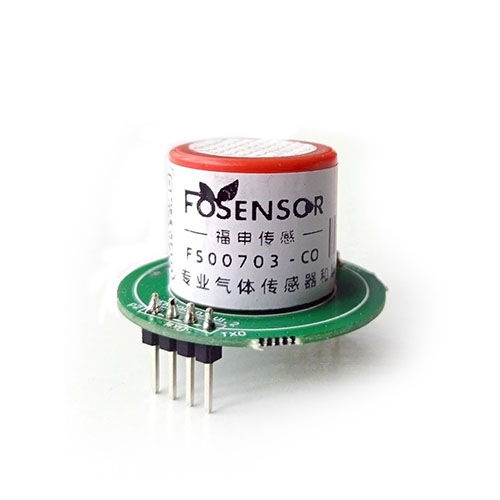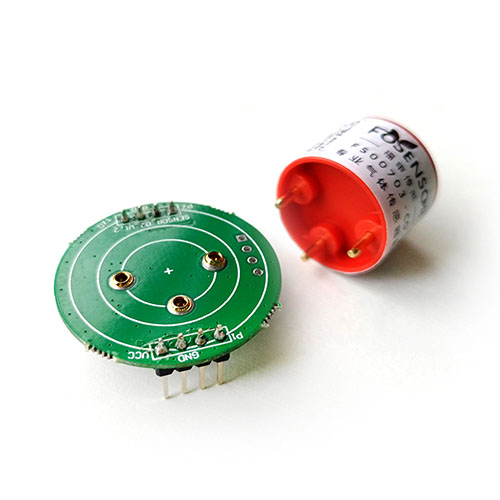Carbon monoxide gas detector
Carbon monoxide gas detector is a carbon monoxide alarm device specially used to detect the concentration of CO gas in the air. Its specific working principle is: when the target gas enters the gas probe part, the sensor inside the carbon monoxide detector will immediately send out a sensor. A certain power signal will be generated according to the level of gas concentration. If the set gas concentration alarm value is exceeded, the instrument will sound and light alarm to prompt. Moreover, the current traditional carbon monoxide detectors have built-in switching signals or relay output signals, which can be directly linked with the control equipment of fans and solenoid valves. When reaching the detection preset alarm point, intelligent start and stop related linkage settings can be automatically eliminated.

Technical principle description
Which technical principle does a carbon monoxide detector use to measure CO gas? The first recommendation is to choose the Electrochemical CO Carbon Monoxide Gas Sensor principle. Currently, the electrochemical technology principle is used in carbon monoxide gas detectors to measure toxic and harmful gases, which is the most common and mature detection method. Technical principle, because the electrochemical sensor itself is characterized by small size, low power consumption, good linearity and repeatability, but there are also some shortcomings, that is, short service life. Generally, the electrochemical sensor built into the carbon monoxide detector is used for 2 years. will be damaged.
However, the Carbon monoxide gas detector has high accuracy requirements for measuring CO gas concentration values. It is recommended to choose the principle of infrared technology. It is based on the near-infrared spectrum selective absorption characteristics of different gas molecules and uses the relationship between gas concentration and absorption intensity to identify gases. A gas sensing device that detects components and determines their concentration with an accuracy of within 1%. (Note: The principle of infrared technology is also more expensive. Those with limited budget may consider choosing the electrochemical principle)

Description of hazard levels with different concentrations of carbon monoxide
(1) Carbon monoxide 100PPM: the maximum allowable value for the human body.
(2) Carbon monoxide 200PPM: Slight headache, dizziness, nausea (not obvious) in 2-3 hours.
(3) Carbon monoxide 400PPM: headache and nausea in 1-2 hours.
(4) Carbon monoxide 800PPM: 45 minutes of convulsion and 2 hours of coma.
(5) Carbon monoxide 1600PPM: convulsions in 20 minutes, death in 2 hours.
(6) Carbon monoxide 3200PPM: convulsions in 5 minutes, death in half an hour.

How to deal with the situation where the alarm keeps ringing
(1) Normal detection alarm
The normal alarm of the Carbon monoxide gas detector sounds, indicating that there is a carbon monoxide leak in the room, and the concentration of the leaked carbon monoxide is increasing. Treatment method: We need to quickly open doors and windows to ventilate the air, and go to an outdoor ventilated place to avoid continuing to inhale carbon monoxide; when the CO concentration value decreases, the alarm sound of the instrument will also stop.
(2) The problem of false alarms
When the Carbon monoxide gas detector does not measure the CO concentration value, an alarm occurs. This situation is a false alarm. Solution: Check if the internal components of the carbon monoxide detector are damaged, which will cause voltage instability and trigger the alarm. Secondly, when checking whether the battery power of the carbon monoxide detector is insufficient, this situation will also cause false alarms because the voltage value set by the carbon monoxide detector is affected, thus sending an alarm signal to prompt the user to replace the battery in time.
(3) The alarm keeps ringing
If the Carbon monoxide gas detector sounds an alarm, we should quickly open windows for ventilation, move people indoors outside, and send them to the hospital for treatment in a timely manner based on the poisoning situation. If the carbon monoxide detector still alarms after ventilation, you can check whether it is a battery problem. If the alarm still does not stop after replacing the battery, suspect a quality problem with the instrument. Contact the manufacturer for replacement or repair in time.





